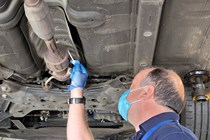Regardless of where you live and how interested you are in cars, you’ll have heard about ‘a spate of cat thefts’. Don’t worry, criminal gangs aren’t kidnapping kittens, but for car owners catalytic converter theft can be almost as traumatic. It’s not simply that it’s expensive and pushes insurance premiums up, most thefts affect used car owners where the vandalism done to steal the exhaust component can easily write the car off.
Almost every petrol car sold in the UK and Europe since 1993 has a catalytic converter, so even recent classic cars are at risk. Diesel cars from the early 2000s on also have catalytic converters and DPFs (diesel particulate filters), but these are usually ‘close-coupled’ – mounted closer to the engine so they warm up faster. Catalyst theft from Japanese, premium, and sports cars is a real problem; no car is safe though, and even vans and pickups are targeted for cat theft.
Most cat thefts are targeted, and undertaken by expert, organised gangs, but if an enterprising local criminal thinks they see an easy way to profit and doesn’t know about cars then vehicles could get damaged for no reason. As such (regardless of whether or not your car has a valuable original-equipment component) you should take precautions if your local Whatsapp/Facebook groups, police (often via Twitter) or newspaper reports on increasing cat thefts in your area.
Why are thieves targeting catalytic converters?
The majority of stolen catalytic converters simply sold on to scrap dealers. Most parts are not worth an immense amount, but some cars have original-equipment catalysts worth hundreds (for example, a Mazda RX-8 specialist advised that you could sell an old, blocked one for up to £600 and buy a brand new sports one for half that). Some thefts are targeting specific models of car because tighter emissions limits on MOT tests mean an older catalytic converter won’t pass – new ones are very expensive, and those are stolen to resell. This is the market that drives a lot of older prestige, hybrid, and Japanese brand cat thefts.
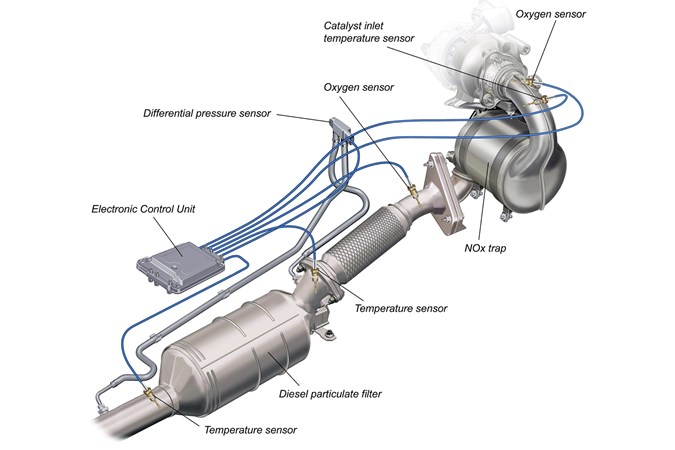
Stealing a catalytic converter sounds like it should take ages, if you’ve ever watched your car exhaust being replaced, but criminals work fast. Usually they will jack the car up and go underneath with a battery-powered angle grinder, and cut the ends of the exhaust pipes it is attached to and any sensor wires. You may see evidence that the car has been tampered with, but quite often the first you’ll know about it is when you start the car and instead of a gentle purr, the absence of a cat means a horrible, loud boom like a tractor. And a warning light or two.
Which cars are targeted for cat theft?
While all cars made after 1993 are at risk, the UK’s most-targeted models are petrol hybrid cars, particularly Toyota and Lexus. Japanese cars in general have expensive replacement cats and high-quality components. Mazda MX-5 and RX-8s are frequent victims, and popular small cars such as the Ford Fiesta Mk6 or Vauxhall Corsa.
Pickups are at risk due to the high ground clearance, and some 1990s-2000 BMW and Mercedes models seem to attract thieves as well. Ultimately any car could be at risk, even the Oscar Meyer Wienermobile.
More recent cars from Volkswagen Group, Ford and others tend to place the catalytic converter close to the engine, inside the bodywork rather than exposed under the car.
How to prevent catalytic converter theft
Location, location, location. Where you live, both geographically and where you can park your car, has an impact on your chances of being a victim of catalytic converter theft. But it’s a problem across the UK. Fleet News reports increases of up to 456% in cat theft between 2019 and 2022, with London being a particular hotspot for such crimes. Key to that is population density and the number of cars parked on the street.
It’s not all bad news – the National Police Chief’s Council reported a fall in cat thefts in August 2021, crediting SmartWater and other anti-theft measures. Part of the response is a register of stolen converters, making them harder to dispose of.
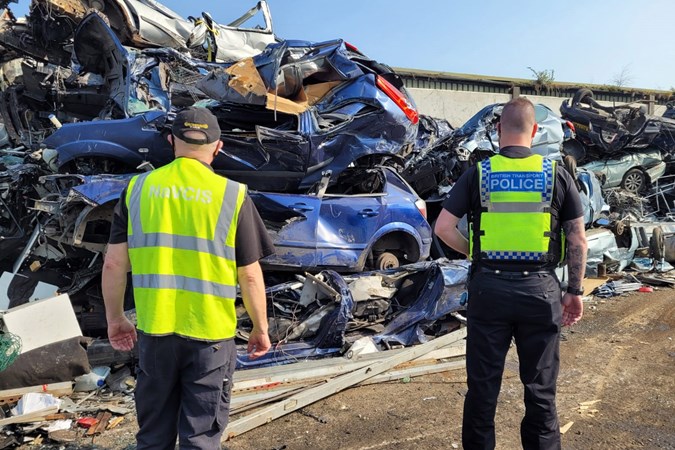
We’ve seen examples of cat theft from secure, monitored workplace car parks with CCTV, and from remote, rural roads with soft verge parking, so you can’t assume bright lights or obscurity will be a deterrent. Thefts can targeted or opportunistic, so here are top tips to make it harder for a catalytic converter thief to target your car.
1. Don’t park in the same spot every day
If you have the sort of car that’s likely to be targeted, such as a Toyota hybrid, move it often and use different places at public, station or work car parks. Thieves scouting for victims look for cars that seem unattended.
2. If you park on your own property, place obstructions near the car
Second or project cars are often at risk; try to hide them from view with a car cover, and if you can, do things like leaving ladders or bins alongside. You want to make it as noisy and inconvenient as possible to get underneath your car. Locking gates and bright, motion-sensitive lights will also deter casual and opportunistic thieves.
3. If you have on-street parking with half-kerb, half road spaces, use them
Don’t park on the kerb or block pavements unless the council has marked and designated spaces this way, but where parking does cross a kerb, use it. Place the centre of the car as close to the kerb as possible without damaging it; it’s much harder to jack up and access to the cat is restricted.
4. Get security markings and an anti-theft kit
This is lower down the list than you might expect, because by the time they are useful the damage has been done. There are cages, locking straps and cat shields; no one solution fits all, but a stainless steel shield with tamper-proof screws is both a visual and physical deterrent, and we would recommend those for pickups, vans and premium hybrid SUVs. The cheapest option is a sticker saying an alarm is fitted, just like the ’80s.
5. Get there before the thieves, sell it yourself
This is an option worth exploring on higher mileage cars. Get a cheap, legal, brand new third-party catalytic converter fitted and sell your genuine one. Replacements often look very different so a savvy thief will know it’s not worth taking, and your car gets a fresh catalyst.
A couple of small things worth noting – keep an eye on Facebook Marketplace for a sudden influx of secondhand cats for sale, and if your local Lidl or Aldi has had cordless angle grinders in the ‘random stuff’ aisle, be extra vigilant for a while.
What if I see someone stealing a catalytic converter?
If you encounter thieves in the act of stealing a converter, yours or someone else’s, do not confront them. If you haven’t been spotted and can do so safely, take pictures from a distance making sure any vans, pickups or unfamiliar car number plates are visible. Do not put yourself at risk, cat thieves are armed with power tools and jack handles and are already less respectful of the law than you are.
Your smartphone should record location and time embedded in any photos; provide these to the police at the earliest opportunity. Under no circumstances should you engage with the criminals or draw attention to yourself. If you don’t have a smartphone or can’t take pictures safely, simply report date, time and any details you can remember.
If it happens on your street or at your home, talk to your GP or the police about victim counselling. Even if you feel fine, criminal activity near the home can be stressful and talking to a trained professional can prevent or alleviate anxiety.
Does insurance cover cat theft?
When getting an insurance quote you should always check the details to make sure the policy fits your needs, but as a rule most UK policies that offer comprehensive or third party, fire and theft cover include catalytic converters as theft. This means you may have a different level of excess to pay, and your claim will count on your record.
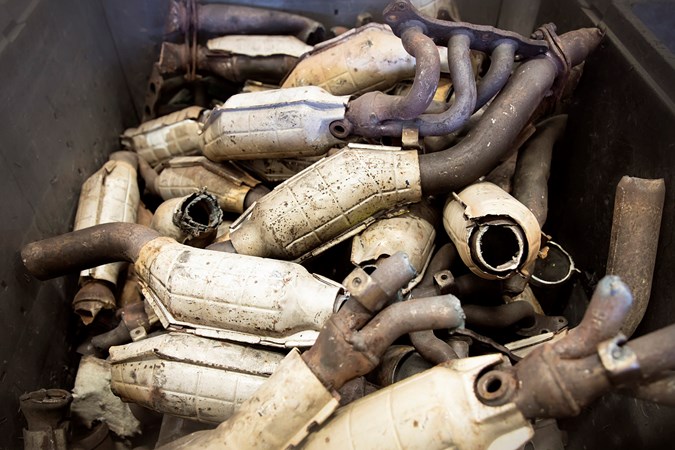
Not all policies will cover secondary damage to the car, such as dents or crushed sills, and for many older cars the damage will often be beyond economic repair. If you do fit a sports or modified catalytic converter you should inform your insurance company, it is unlikely to have a big impact on premium but could invalidate a claim if not declared or approved for road use.
Should you buy a car that’s had the cat stolen?
Flick through the free ads and Facebook Marketplace classifieds and you’ll often find unusually cheap, appealing cars with a sorry tale – cat theft victim. One we saw just before writing this article was a low mileage BMW 3 Series Compact for just a few hundred pounds, and it looked clean at first glance. Clearly a car that the owner’s taken care of, but the combined cost of repair wrote it off anyway.
This does tick some of the boxes for a good repairable write-off purchase; it’s for sale by the owner, the damage is recent and not structural, and if you’re concerned about being kind to people the price is more than the scrap value, so you’re not taking advantage – they may even be happy if you intend to put their once-loved car back on the road. In this case, as in many cases, the costs outweigh the saving over an undamaged car.
Our advice would be to buy older cars that have been subject to catalyst theft only as a source of spares for restoring your own car, rather than trying to put them back on the road. Before you make an offer check what you can get for the scrap without the catalytic converter, it could be much less than you think. Also bear in mind that if the damage has resulted in an insurance write off, a Cat S or N car may cost more to insure in future.
Replacing a catalyst is easy enough; there are legal, functional pattern components at affordable prices. However, the damage to the rest of the exhaust system often includes downpipe, centre pipe, mounts and crucially, wiring for the O2 sensor. Scuffs and damage to the underseal are common repairs, and sills crushed by jacks are difficult to fix properly. If you have a car that can donate the parts and either don’t care, or can repair, the bodywork then all it costs is your time – but if you wanted to restore the car to its former condition there is, sadly, a reason it’s written off for what seems like a simple part.
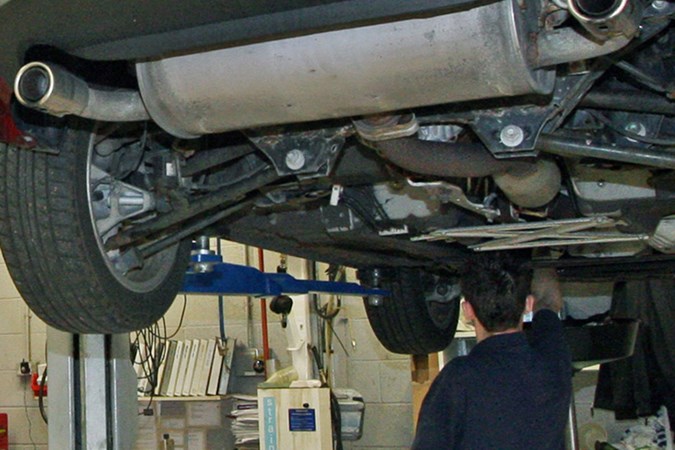
More valuable, later cars may be worthwhile. Do your research and if you can, ask an independent garage to check the underside of the car and give you a complete, detailed breakdown and estimate of what needs doing. Even if you plan to do it yourself, a few pounds spent on that advice could save you thousands by avoiding a bad purchase. Later cars have multiple cats and sensors and the damage can be extensive.
Finally, beware any salvage car for sale by the trade – regardless of whether they bought as scrap to resell, or it’s a car they’ve given up on repairing. If a connected trader with established suppliers has deemed it uneconomic to repair, it’s likely that it will cost you far more to try the same.
Just so you know, we may receive a commission or other compensation from the links on this website - read why you should trust us.







